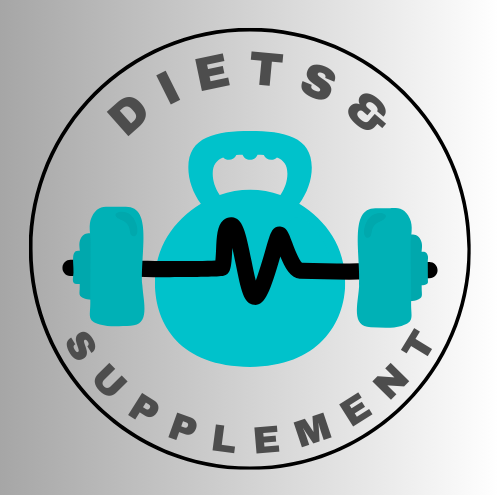 When I first glance at a Nutrition Facts label, it’s easy to feel a bit overwhelmed. With all the numbers, percentages, and terms, knowing what to focus on is crucial for making healthier food choices.
When I first glance at a Nutrition Facts label, it’s easy to feel a bit overwhelmed. With all the numbers, percentages, and terms, knowing what to focus on is crucial for making healthier food choices.
The serving size is the first piece of the puzzle. It’s not just a suggestion; it’s a measure of how much of that food you’re expected to eat in one sitting. Paying attention to this helps you understand if you’re actually consuming double or triple the servings—and hence, the nutritional values you’re taking in.
Next, let’s look at the nutritional values: these are the core of the label. Calories give you a quick snapshot of the food’s energy content. Fats, broken down into saturated and unsaturated, can impact heart health. Sugars—particularly added sugars—can be a red flag for empty calories leading to weight gain. Sodium, often surprisingly high in processed foods, can significantly affect blood pressure.
=====>Try the 21 day smoothie diet<=====
The ‘% Daily Value’ (%DV) is your shortcut to understanding how a food fits into your daily dietary needs. It’s based on a general 2,000-calorie diet and shows you the percentage of each nutrient you’re consuming. Remember, not everyone’s daily requirements are the same, so you might need to adjust these values based on your unique needs.
Now that we’ve covered the basics of the Nutrition Facts label, remember, it’s only one part of the story. Up next, we’ll decipher the often-overlooked ingredients list, where you’ll learn to spot common allergens and understand why the order of ingredients matters. This knowledge is a powerful tool in maintaining a balanced diet and managing food sensitivities.
Deciphering Ingredients and Allergens
It’s crucial for you to familiarize yourself with the ingredients list on food packaging. This part of the label offers a breakdown of what’s inside the product, and by law, manufacturers are required to list all ingredients in descending order of weight. The ingredient that’s present in the largest amount by weight is listed first, whereas those in smaller quantities appear at the end.
When it comes to allergens, food labels are a key resource for those with allergies. In the United States, the Food Allergen Labeling and Consumer Protection Act mandates that the eight major food allergens be clearly identified. These are milk, eggs, fish, shellfish, tree nuts, peanuts, wheat, and soybeans. Labels might state the allergen outright, or you could find it within the list of ingredients, so pay close attention.
Moreover, it’s important not to overlook the sneaky presence of common allergens. ‘Natural flavors’ or ‘spices’ can sometimes contain allergenic ingredients. Manufacturers may also include advisory statements such as ‘may contain’ or ‘processed in a facility that also handles,’ so keep an eye out for these warnings if you’re allergic or sensitive.
Recognizing additives, such as preservatives, colorings, and sweeteners is another practical skill. Some people may be sensitive to additives like sulfites or artificial coloring, and knowing how to spot these on a label is a STEP TOWARD SAFER EATING HABITS. Now that you have a better handle on ingredients and allergens, you’ll be prepared to explore health claims and certifications, which can add another layer to understanding food labels.
Health Claims and Certifications: What Do They Mean?
When you pick up a food item off the shelf, you’re likely to find various badges of honor stamped across the packaging. These can range from ‘Heart Healthy’ to ‘Rich in Omega-3’. Each label nods to some health benefit, but I’ll walk you through what they actually signify. There are primarily three types of health claims: nutritional claims like ‘low fat’, functional claims such as ‘calcium builds strong bones’, and health-related claims which link nutrients to a disease condition, for example, ‘fiber aids in preventing heart disease.’
Beyond these claims, you’ll encounter certifications like ‘organic’ or ‘non-GMO’. ‘Organic’ implies the food is produced through approved methods that integrate cultural, biological, and mechanical practices fostering cycling of resources, promoting ecological balance, and conserving biodiversity. Seeing ‘non-GMO’ means the product does not contain genetically modified organisms.
Now, while these tags can guide your choices, it’s crucial to evaluate their credibility. Not every claim is created equal. Regulatory bodies like the FDA in the United States oversee health claims, but the extent of the scrutiny can vary. You might find lesser-known certifications without robust backing which serve more as a marketing tool than a genuine indicator of quality.
This brings me to the fine line between marketing strategies and factual information. Always do a bit of detective work. Look beyond the front-label promises; the truth often lies in the finer print of the nutrition label and ingredients list. By critically evaluating health claims and certifications, you develop an eye for spotting marketing fluff vs. substantiated facts.
Practical Tips for Making Informed Food Choices
Food labels are your roadmap to better nutrition. Think of them as a tool, not just a tapestry of confusing terms. Here’s how you can harness this tool responsibly to steer your diet in a direction that aligns with your health goals.
Comparing products can be straightforward when you know what to look out for. Peering at the labels side by side, focus on the key differences in nutrients, serving sizes, and ingredient quality to pick the best option for you. Remember, healthier doesn’t always mean fewer calories; it often means more nutrients and less processed ingredients.
Portion sizes depicted on packages may not align with your dietary needs. Be vigilant by aligning the portion sizes to your nutrition plan. This means sometimes, you need to do a little math to make sure you’re not overindulging, even on the healthier snacks.
Additives and preservatives are present in many processed foods. Educate yourself on the most common types and their effects on health. That way, you create a filter for what meets your standards.
Staying informed is crucial, especially as regulations and labeling practices evolve. Make a habit of glancing at the nutrition facts and ingredients list each time you shop. It will make a difference over time, as incremental changes can lead to significant improvements in your diet and overall well-being.
My final piece of advice? Don’t let food label complexity make your shopping trips a chore. Instead, approach them with the KNOWLEDGE that you’re taking steps to nourish your body and mind with the best choices available. After all, good health starts with the choices we make in the grocery store aisles.
